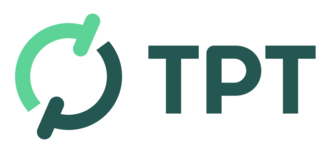
news
How a Teacher Made $1 Million Selling Lesson Plans

Deanna Jump, a kindergarten teacher in Warner Robins, Ga., recently became a millionaire. She didn’t inherit a fortune or win the lottery. She earned the money by selling lesson plans to other teachers. Jump is one of about 15,000 teachers marketing their original classroom materials through the website Teachers Pay Teachers (TPT). Since signing on to the site in September 2008, she’s created 99 separate teaching units, priced at about $8 a pop. They “usually cover about two weeks’ worth of material,” says Jump, whose monthly earnings through the site now exceed $100,000. “If you want to teach about dinosaurs, you’d buy my dinosaur unit, and it has everything you need, from language, art, math, science experiments, and a list of books you can use as resources.”
While no one else on TPT has been as successful as Jump, at least three other teachers have earned $300,000, and 26 have earned more than $100,000, according to the site’s founder, Paul Edelman. “Of the 15,000 teachers who are contributing, about 10,000 make money in any given quarter,” he says.
A former New York City middle school English teacher, Edelman launched TPT in 2006 after sinking countless hours into planning his own classes. He says he and his colleagues perused online sites for helpful resources but found only subpar, outdated materials. After four years in the classroom, he hit on the idea of an online marketplace. “I thought teachers would be more incentivized to post their best stuff and to create even higher-quality materials if they had the opportunity to get paid,” says Edelman, 40, who now lives in Fontainebleau, France. “I had no clue what I was doing, but I knew it was a really good idea.” Edelman does not have a tech background. “I read books. I cashed out my retirement fund and sold my car and my motorcycle and got enough money together—around $10,000—to hire a programmer to build the first version of the site.”
Nine months after the launch, Scholastic (SCHL) bought the site for $500,000, Edelman says. Over the next few years, TPT continued growing, though not fast enough to hold Scholastic’s interest. Edelman bought the site back in 2009 at a discount. “Scholastic—being a big, publicly traded company—wanted instant gratification, YouTube-like, explosive growth,” he says. The New York-based publisher would not comment.
Today, TPT has more than 1.3 million registered buyers and sellers and is adding new users at a rate of at least 35,000 a week, says Edelman, who has a nine-person staff in the U.S. to help run the business. Gross sales for the 12 months through September reached $9.7 million, he says, adding that the company is now “comfortably” profitable. “With marketplaces, it’s that chicken-and-egg thing,” says Edelman. “Until you have lots of products, you don’t have lots of buyers.”
Teachers pay an annual $59 fee to sell materials on the site, and TPT takes a 15 percent cut of most sales. Teachers can sell materials without buying a membership, but then TPT’s share rises to 40 percent of a sale.
Jump attributes some of her success to her blog, Mrs. Jump’s Class, which directs readers to her TPT materials. The site’s “Follow Me” button has also been a boon, leading to more than 19,000 followers. “Every time I post a new product, an e-mail goes out to those people and, literally within an hour, I’m selling, selling, selling,” she says.
Jump has earned $620,000 through TPT so far this year, according to Edelman—more than 11 times her annual salary as a teacher. She’s used the money to pay off bills, send her daughter to college, and buy a wheelchair-accessible van for her quadriplegic brother. “When I realized that we could buy that van and it wouldn’t be a financial hardship for my family, that was really something,” she says. “But we really haven’t changed our lifestyle. I drive a Kia, OK? I’m just trying to keep it real.”
Article written by Caroline Winter, Bloomberg